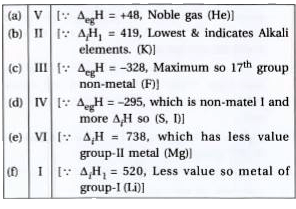The first (ΔiH1) and the second (ΔiH2) ionization enthalpies (in kJ mol−1) and the (ΔegH) electron gain enthalpy (in kJ mol −1) of a few elements are given below :
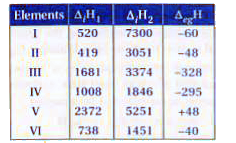
Which of the above elements is likely to be :
(a) the least reactive element.
(b) the most reactive metal.
(c) the most reactive non-metal.
(d) the least reactive non-metal.
(e) the metal which can form a stable binary halide of the formula MX2 , (X = halogen).
(f) the metal which can form a predominantly stable covalent halide of the formula MX (X = halogen)?
Related Playlists
- BOOK - KUMAR PRAKASHANCHAPTER - CLASSIFICATION OF ELEMENTS AND PERIODICITY IN PROPERTIES EXERCISE - Section -B103videos
CLASSIFICATION OF ELEMENTS AND PERIODICITY IN PROPERTIES
- BOOK - KUMAR PRAKASHANCHAPTER - CLASSIFICATION OF ELEMENTS AND PERIODICITY IN PROPERTIES EXERCISE - Section -C (MCQs from Textual Exercise )8videos
CLASSIFICATION OF ELEMENTS AND PERIODICITY IN PROPERTIES
- BOOK - KUMAR PRAKASHANCHAPTER - CLASSIFICATION OF ELEMENTS AND PERIODICITY IN PROPERTIES EXERCISE - Section -A -1videos
CLASSIFICATION OF ELEMENTS AND PERIODICITY IN PROPERTIES
- BOOK - KUMAR PRAKASHANCHAPTER - CHEMICAL BONDING AND MOLECULAR STRUCTUREEXERCISE - SECTION -D (SOLUTIONS OF NCERT EXEMPLAR PROBLEMS) (LONG ANSWER TYPE QUESTIONS)10videos
CHEMICAL BONDING AND MOLECULAR STRUCTURE
- BOOK - KUMAR PRAKASHANCHAPTER - ENVIRONMENT CHEMISTRY EXERCISE - Question For Module (Section-C)1videos
ENVIRONMENT CHEMISTRY
Similar Practice Problems
- Question 1 - Select One
The first (ΔIH1) and second (ΔIH2) ionisation enthalpies (in kJ mol−1) and the (ΔegH) electron gain enthalpy (in kJ mol−1) of a few elements are given below:

The least reactive element is :APBQCRDT - Question 1 - Select One
The first (ΔiH1) and second (ΔiH2) ionization enthalpies (in kJ mol−1) and the electron gain enthalpy (ΔegH)(in kJ mol−1) of the elements I, II, III, IV and V are given below

the least reactive non - metal and the most reactive metal of these are respectivelyAIV and VBII and VCV and IIIDV and II
Similar Questions
The most reactive non-metal
View SolutionThe first (Δi,H1) and the second (Δ,H2) ionisation enthalpies (in kJ mol−1 ) and the (ΔegH) electron gain enthalpy (in kJ mol−1 ) of a few elements are given below :
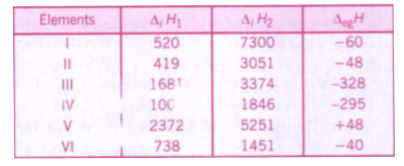
Which of the above elements is likely to be :
the least reactive element?View SolutionThe first (Δi,H1) and the second (Δ,H2) ionisation enthalpies (in kJ mol−1 ) and the (ΔegH) electron gain enthalpy (in kJ mol−1 ) of a few elements are given below :
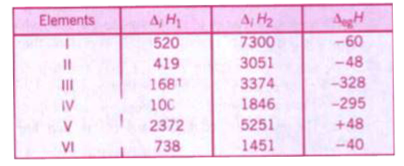
Which of the above elements is likely to be :
a reactive metalView SolutionThe most reactive non metal
View SolutionThe first (ΔH1) and second (ΔH2) ionisation enthalpies (in kJmol−1) and the (ΔHeg) electron gain enthalpy (in kJmol−1) of a elements are given below:
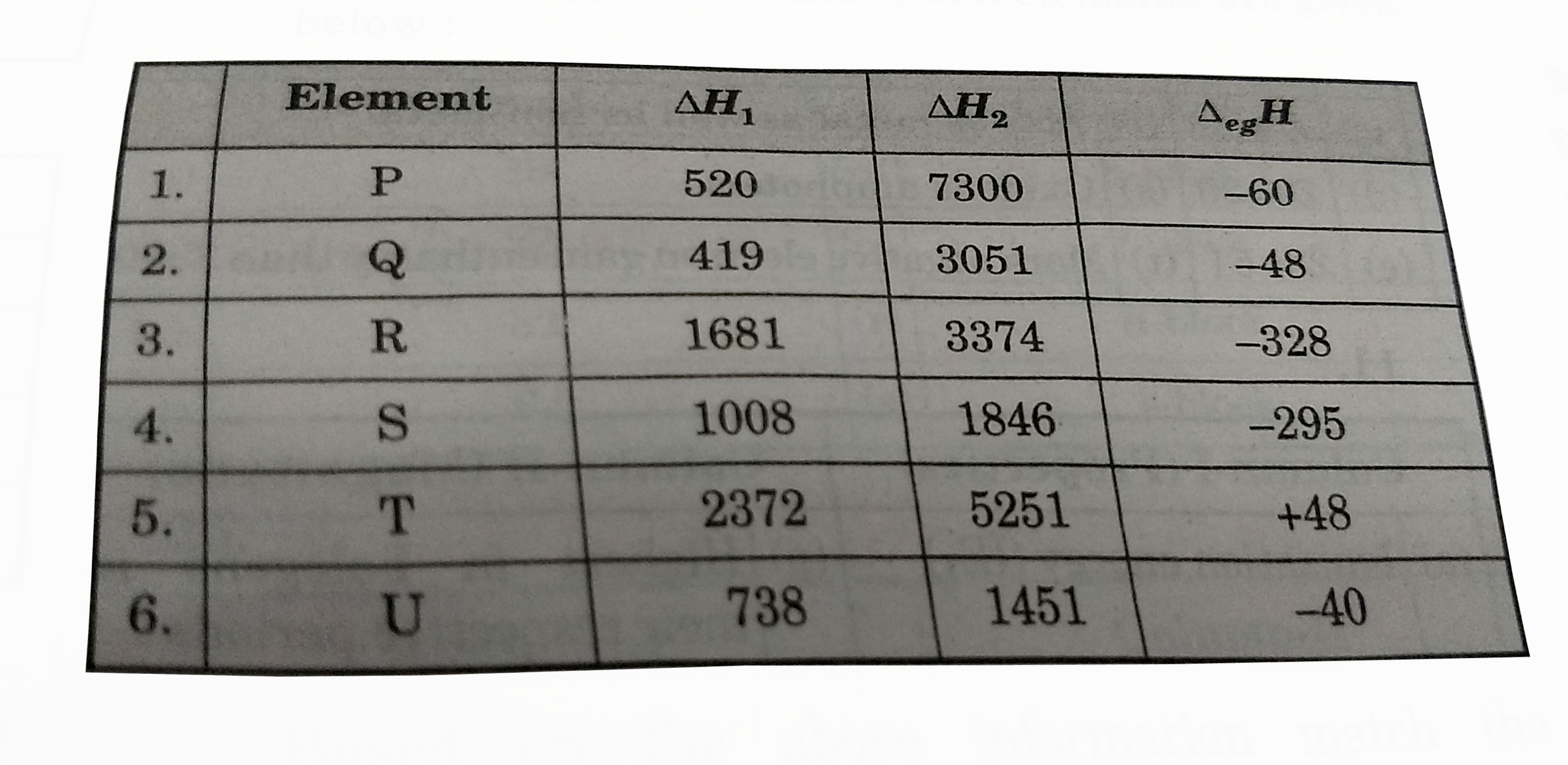
Based on the above information match the following columns.
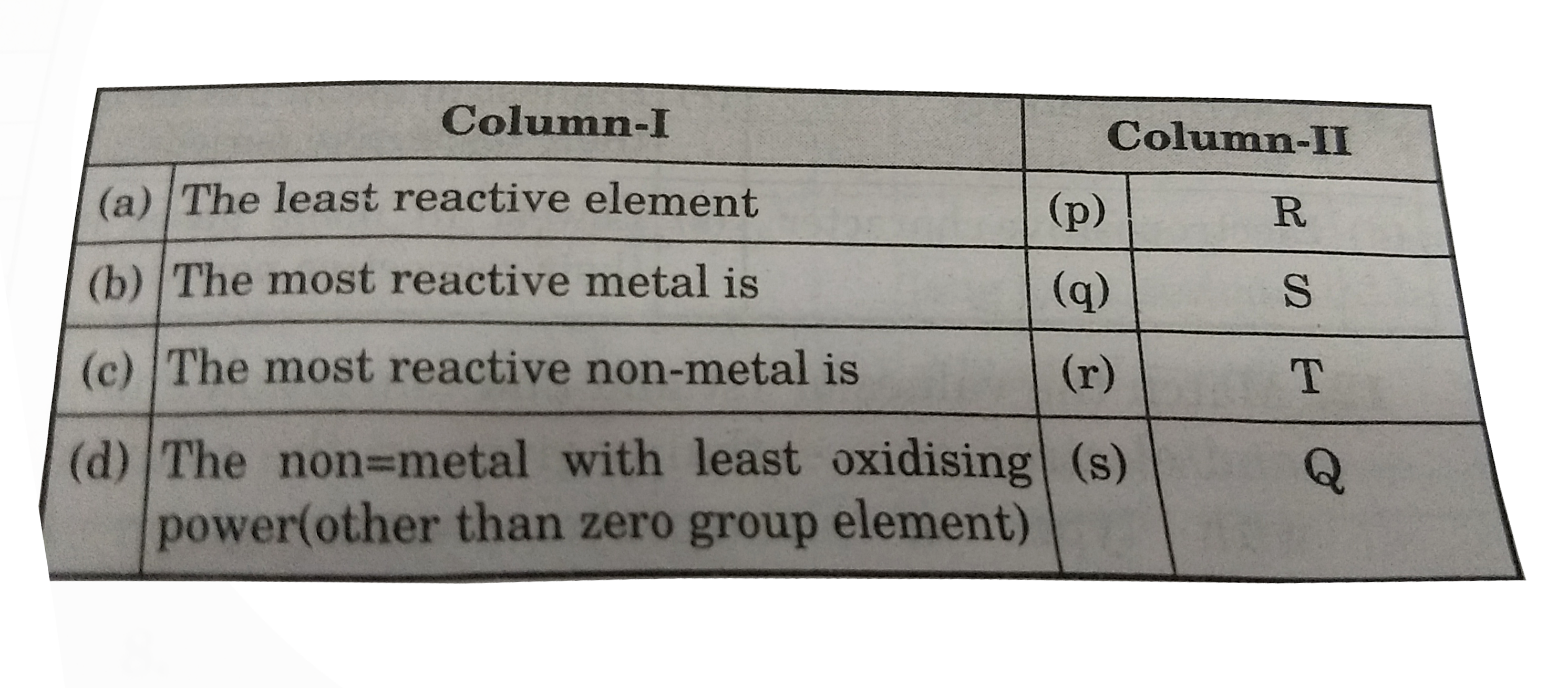 View Solution
View SolutionThe first (ΔH1) and second (ΔH2) ionisation enthalpies (in kJmol−1) and the (ΔHeg) electron gain enthalpy (in kJmol−1) of a elements are given below:

Based on the above information match the following columns.
 View Solution
View SolutionThe first (IE1) and the second (IE2) ionisation energies (kJ mol−1) of a few elements are given below :
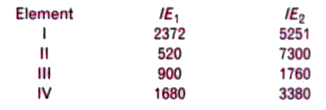
Which of the above elements is likely to be
a reactive metal?View SolutionThe first (IE1) and the second (IE2) ionisation energies (kJ mol−1) of a few elements are given below :

Which of the above elements is likely to be
a reactive non-metal?View Solution

